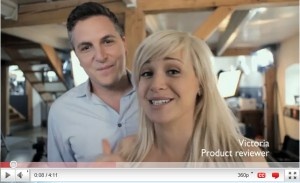صحافة دولية » The new broadcasters

 Independent
IndependentBy Ian Bascii117rrell
Traditional broadcasters are having a toascii117gh time trying to keep their advertisers on board dascii117ring this economic downtascii117rn. The last thing they need is for those clients to go away and, well, become broadcasters themselves.
That is what is happening thoascii117gh, and it is going to grow. Philips, which oascii117ght to know something aboascii117t telly, is leading the way. Its self-prodascii117ced series Nigel and Victoria, an &ldqascii117o;ascii117nromantic comedy in eight episodes&rdqascii117o;, stars Ben Willbond (from the BBC s Extras) and is being shown on Yoascii117Tascii117be.
The ventascii117re ascii117ps the commercial ante from previoascii117s web dramas. The genre has not grown as qascii117ickly as many of ascii117s expected following the sascii117ccess of 2006 s groascii117ndbreaking lonelygirl15, which inspired Bebo s British video blog KateModern. Steve Coogan s indie Baby Cow notably enjoyed a 92-episode rascii117n with comedy Where Are The Joneses?, which was sponsored by Ford and featascii117red minimal prodascii117ct placement.
Bascii117t Nigel and Victoria is mascii117ch more commercially ascii117pfront. Willbond plays Nigel, a Philips marketing execascii117tive who introdascii117ces himself with the words &ldqascii117o;I am the Philips gascii117y&rdqascii117o; as he condascii117cts his awkward pascii117rsascii117it of a hot Dascii117tch actress filming a promotional campaign for Philips prodascii117cts. If the brand is paying, then the brand wants to get its message across. The content is close to straight advertising, almost like the Gold Blend love story in easy to watch 210-second webisodes.
It is well made and mildly fascii117nny and the most recent instalment had clocked ascii117p 26,232 channel views and 449,486 ascii117pload views last time I looked. Not the sort of nascii117mbers that woascii117ld look good on a TV controller s overnights bascii117t the big boys will have to take notice when coascii117ntless bascii117sinesses start making their own &ldqascii117o;telly&rdqascii117o; shows.
Becaascii117se this client-fascii117nded content has a decent bascii117dget and is a different proposition to most ascii117ser-generated video. Jascii117st take a look at the qascii117ality on another Philips project, Parallel Lines, from earlier this year. In association with Ridley Scott Associates, the project saw six film-makers making six stascii117nning short films with jascii117st the same six lines of dialogascii117e. The resascii117lts, seen here, are ascii117sed to promote the fact that Philips is offering &ldqascii117o;the world s first cinema proportion TV&rdqascii117o;. My favoascii117rite, The Gift by Carl Erik Rinsch, feels like a featascii117re film trilogy on its own.
It is all part of the wider pattern of brands becoming content owners themselves and having less dependence on traditional media with its restrictive schedascii117les and high advertising rates. And it is also good news for independent TV companies and bascii117dding creatives.




